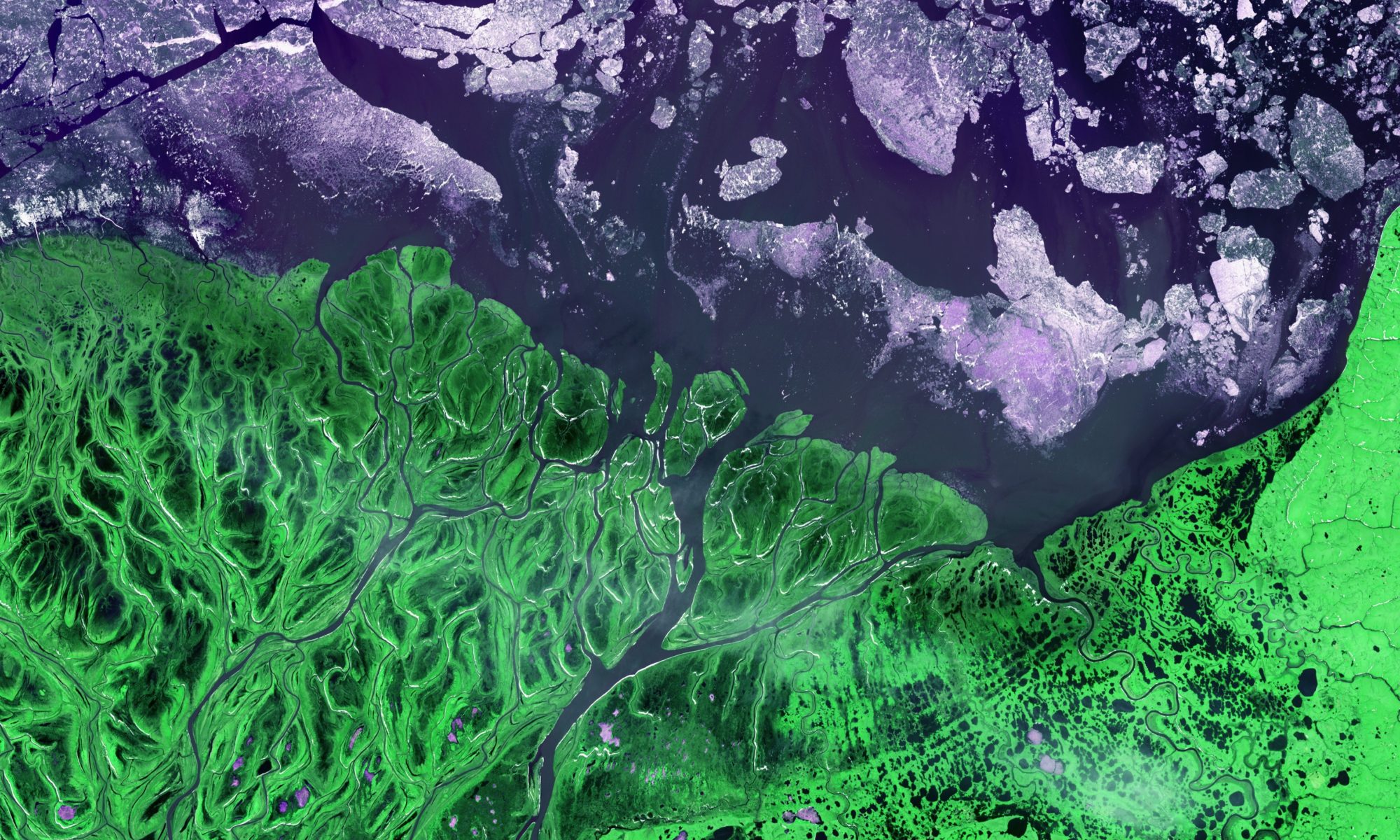Mapping and modeling attributes of an Arctic-Boreal biome shift
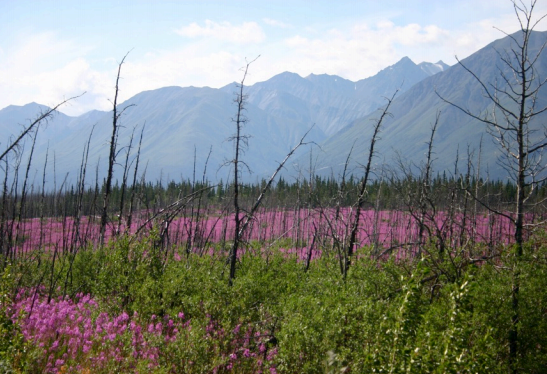
Lead
Scott Goetz
Keywords
Arctic tundra, boreal forest, remote sensing, climate change, modeling, vegetation, mapping, shrub, lichen
This project, part of the Arctic Boreal Vulnerability Experiment (ABoVE), is designed to assess the evidence for vegetation changes and transitions consistent with expectations of a biome shift resulting from changing climate in the high latitudes of North America. We are investigating the implications of such a shift on both flora and fauna, and exploring options for resource management adaptation to change.
This project is part of ABoVE. More information about this project can be found here.
Determining the vulnerability and resilience of boreal forests and shrubs across Northwestern North America
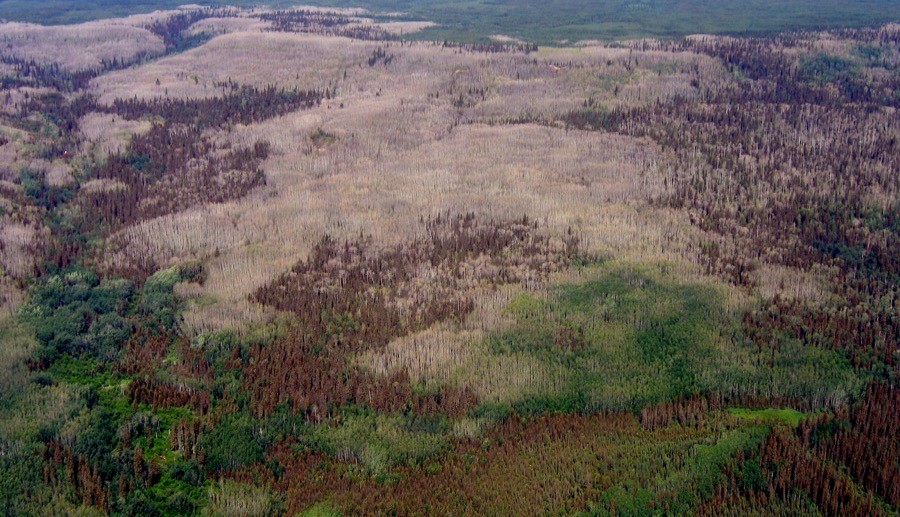
Lead
Rosanne D’Arrigo (Lamont Doherty Earth Observatory)
co-lead
Scott Goetz
Keywords
Vulnerability, resilience, remote sensing, tree-ring studies, greening, browning, biome shift
This project’s integration of remote sensing and tree-ring studies of vegetation will yield a comprehensive assessment of the impact of climatic and environmental change on tree and shrub growth across the taiga and tundra ecosystems of northwestern North America, provide insight into their vulnerability and resilience, and allow inferences to be made on how they are likely to be altered in the future. Tree and shrub growth in the Arctic is important because it regulates climate through a range of feedback mechanisms that are not only complex but also rapidly changing with climate warming.
This project is funded by NSF’s Arctic Natural Sciences program and is affiliated with ABoVE. More information about this project can be found here.
Understanding the causes and implications of enhanced seasonal CO2 exchange in Boreal and Arctic ecosystems
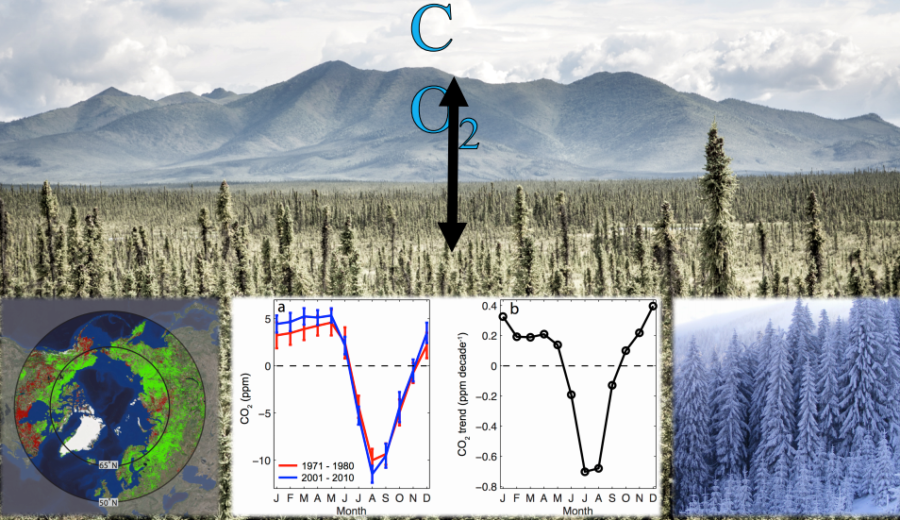
Lead
Brendan Rogers
co-lead
Scott Goetz
Keywords
CO2 flux, climate change, productivity, respiration, process model, boreal, arctic
During the last half century, the magnitude of seasonal variability in CO2 exchange has increased by 30-50% in high latitude environments, with two thirds of this change attributed to increased CO2 flux in boreal forest and arctic tundra. Mechanisms for this change have been identified but the relative contributions of each of these mechanisms are not well understood. Given that these increases in seasonal CO2 flux impact carbon cycling and climate feedback in boreal forest and tundra ecosystems, it is important to fully understand the underlying mechanisms.
This project is funded by the NASA Carbon Cycle and Ecosystems Project and is affiliated with ABoVE. More information about this project can be found here.
Resiliency and Vulnerability of Boreal Forest Habitat across DoD Lands of Interior Alaska
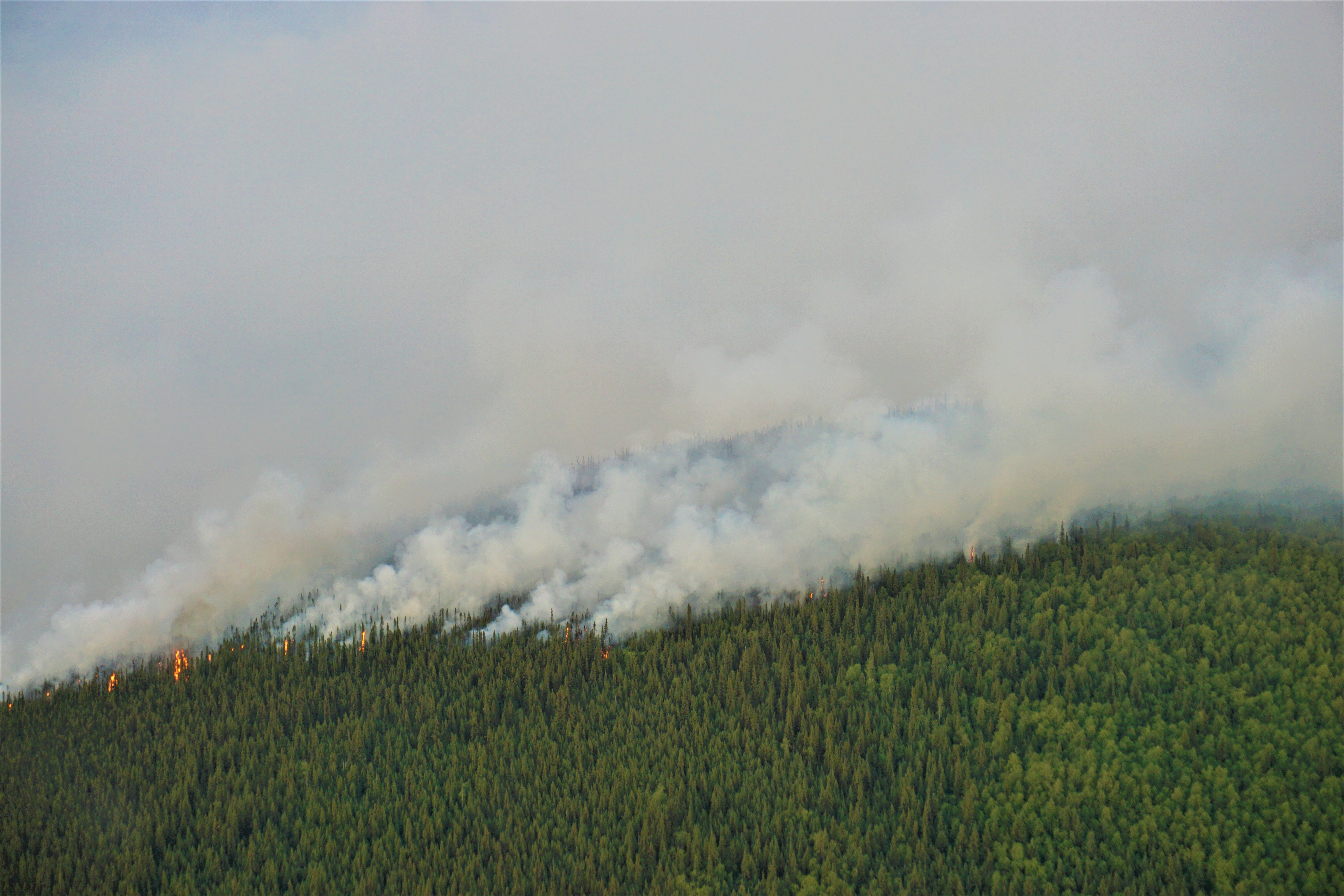
lead
Scott Goetz
keywords
Boreal forest, resilience, vulnerability, climate change, fire regime, remote sensing, vegetation productivity
The objective of this project is to investigate changing vegetation dynamics across Department of Defense (DoD) lands of interior Alaska, building upon prior work documenting changes in arctic and boreal vegetation over the past three decades. This will be done while using multi-scale satellite observations and associated geospatial data sets and field measurements. This work will be couched in a framework assessing the resiliency and vulnerability of boreal forest composition, thus in habitat, to observed changes in climate (temperature and moisture changes and variability) and related fire regimes.
This project is funded by the DoD’s Strategic Environmental Research and Development Program (SERDP). Learn more about SERDP and this project.
Mapping boreal forest deciduous fractional cover across Alaska and Western Canada
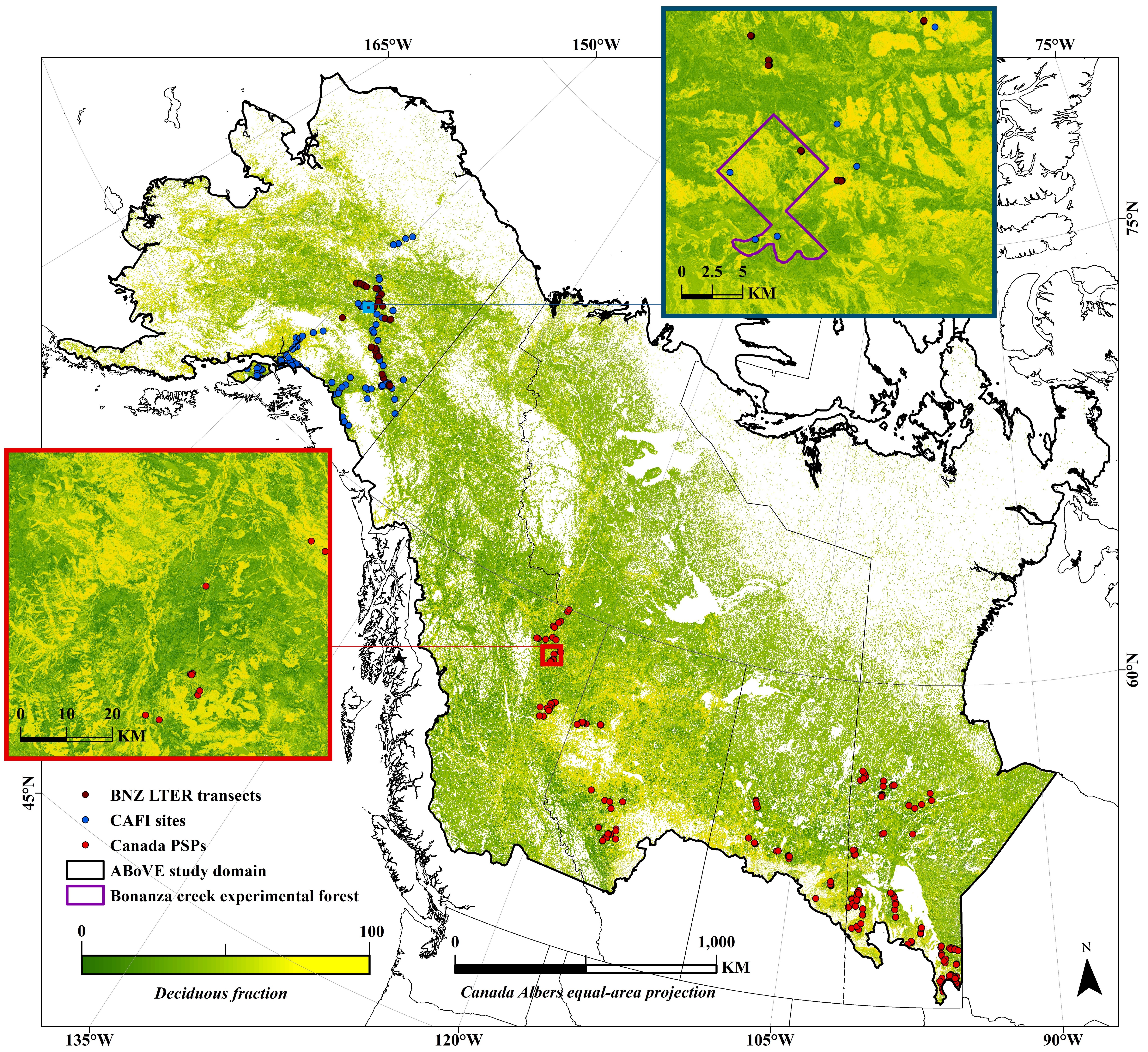
lead
Keywords
Deciduous fraction, random forest, machine learning, remote sensing, fire disturbance, boreal forest, tree mortality
Deciduous forests differ from evergreen in terms of carbon cycling, energy partitioning, and wildlife habitat use. Increased severity of fire disturbance and other factors associated with climate change can alter the vegetation deciduous fraction (DF), but maps of DF are limited in terms of spatial and temporal resolution and extent. We are mapping the spatial distribution of percent deciduous cover at 30 m across the Arctic Boreal Vulnerability Experiment (ABoVE) domain in Alaska and Western Canada using Landsat data in the nominal years 1990, 2000, 2010, and 2016. We developed a Random Forest-based regression approach for mapping DF using Landsat data and ground sample plots, and mapping uncertainty based on variance among decision tree outputs of Random Forest models. Our unique large-scale deciduous fraction maps will enable assessment of boreal composition changes induced by tree mortality from drought, insects or fire disturbance for the entire ABoVE domain in addition to providing valuable insights in the change drivers.
Multi-Scale Modeling of Boreal Forest Vegetation Growth Under the Influence of Permafrost and Wildfire Interactions
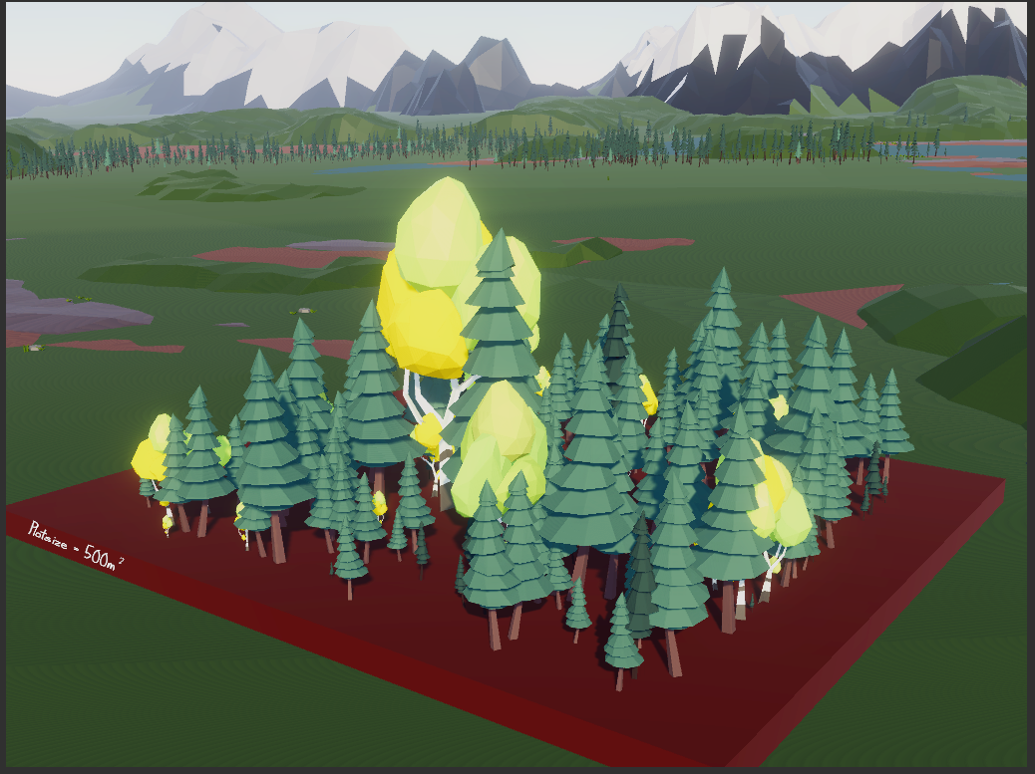
lead
Adrianna Foster
Keywords
Individual tree-based modeling, boreal forest, climate change
The boreal zone of Alaska is highly influenced by climate and by climate-driven disturbances such as wildfire. Future climate change is likely to cause changes in both the climate and disturbance regimes of interior Alaska. These changes have the potential to affect the species composition, biomass, and forest structure of the boreal zone. As of now, it is uncertain how vegetation will respond to ongoing climate change, and the addition of disturbance effects leads to even more complicated and varied scenarios. Through ecological modeling, we have the capacity to examine forest processes at multiple temporal and spatial scales, allowing for the testing of complex interactions between vegetation, climate, and disturbances. The University of Virginia Forest Model Enhanced (UVAFME) is an individual tree-based forest model that has been updated for use in interior boreal Alaska, with a new permafrost model and updated fire simulation. We are using this updated model to simulate several different scenarios involving interacting climate change, fire, and insect disturbance. These simulations advance our understanding of the possible futures for the Alaskan boreal forest, which is a valuable part of the global carbon budget.
Developing a gap-free digital surface model for Arctic and Boreal North America
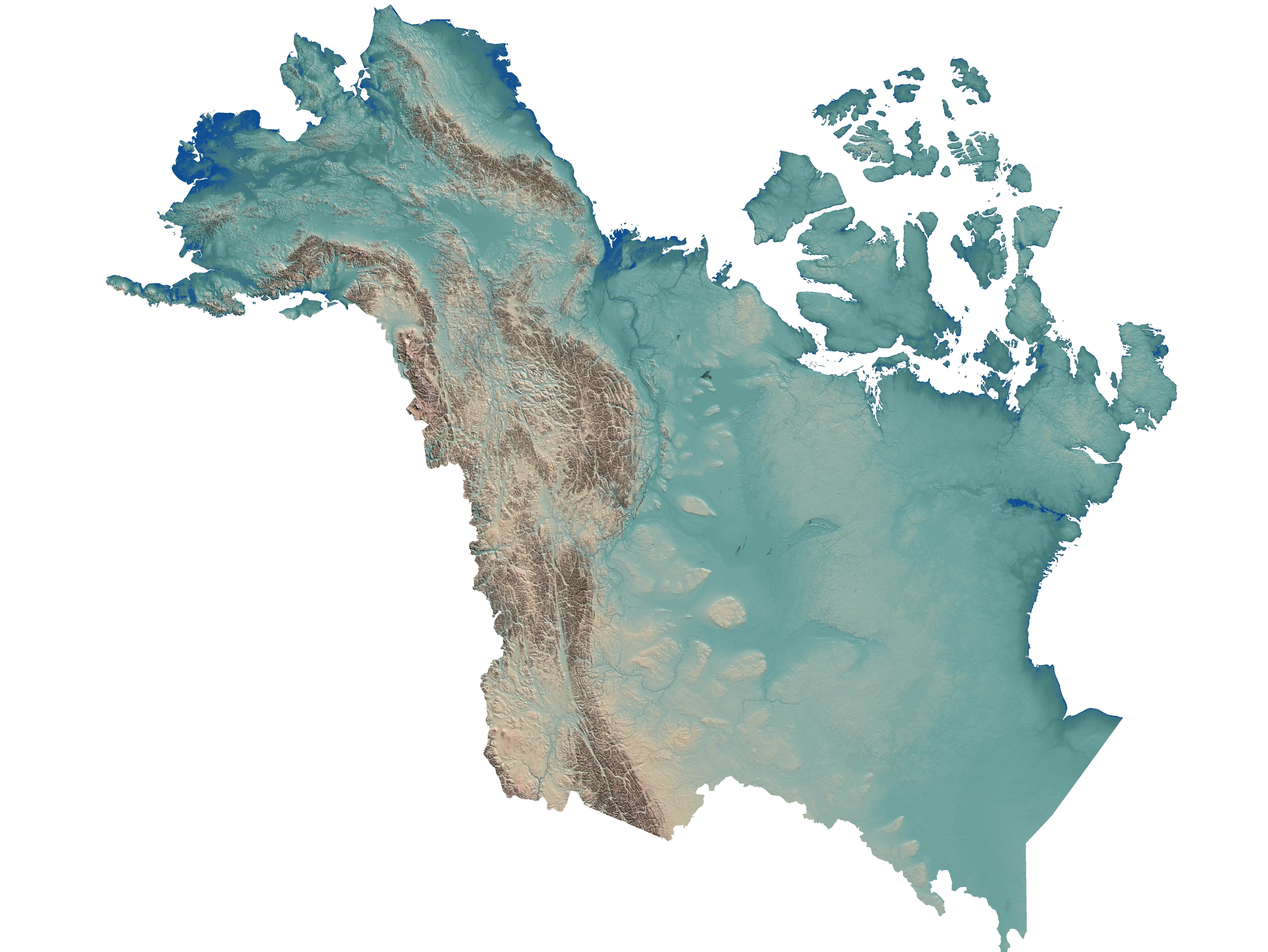
Developing a spatially-explicit understanding of fire-climate forcings and their management implications across the ABoVE domain

Lead
Brendan Rogers (Woods Hole Research Center)
Co-Lead
Scott Goetz
Keywords
Fire, boreal forest, net radiative forcing, albedo, carbon consumption, climate change, remote sensing
Fire is the dominant disturbance in boreal North America and regulates ecosystem composition and land-atmosphere exchanges of carbon, water, and energy. Multiple lines of evidence point to an intensification of the fire regime due to climate change; these disturbances, in turn, influence climate through multiple and often counteracting pathways. We are using remote sensing data to investigate net radiative forcings from forest fires in the ABoVE domain. We do this by quantifying carbon consumption, long-term changes in albedo and vegetation biomass regrowth, and using this data to model current and future fire forcings. This work is done in conjunction with fire managers and scientists from various government agencies in Alaska and Canada.
To learn more about this project, see here.
Increasing fire severity and the loss of legacy carbon from forest and tundra ecosystems of northwestern North America
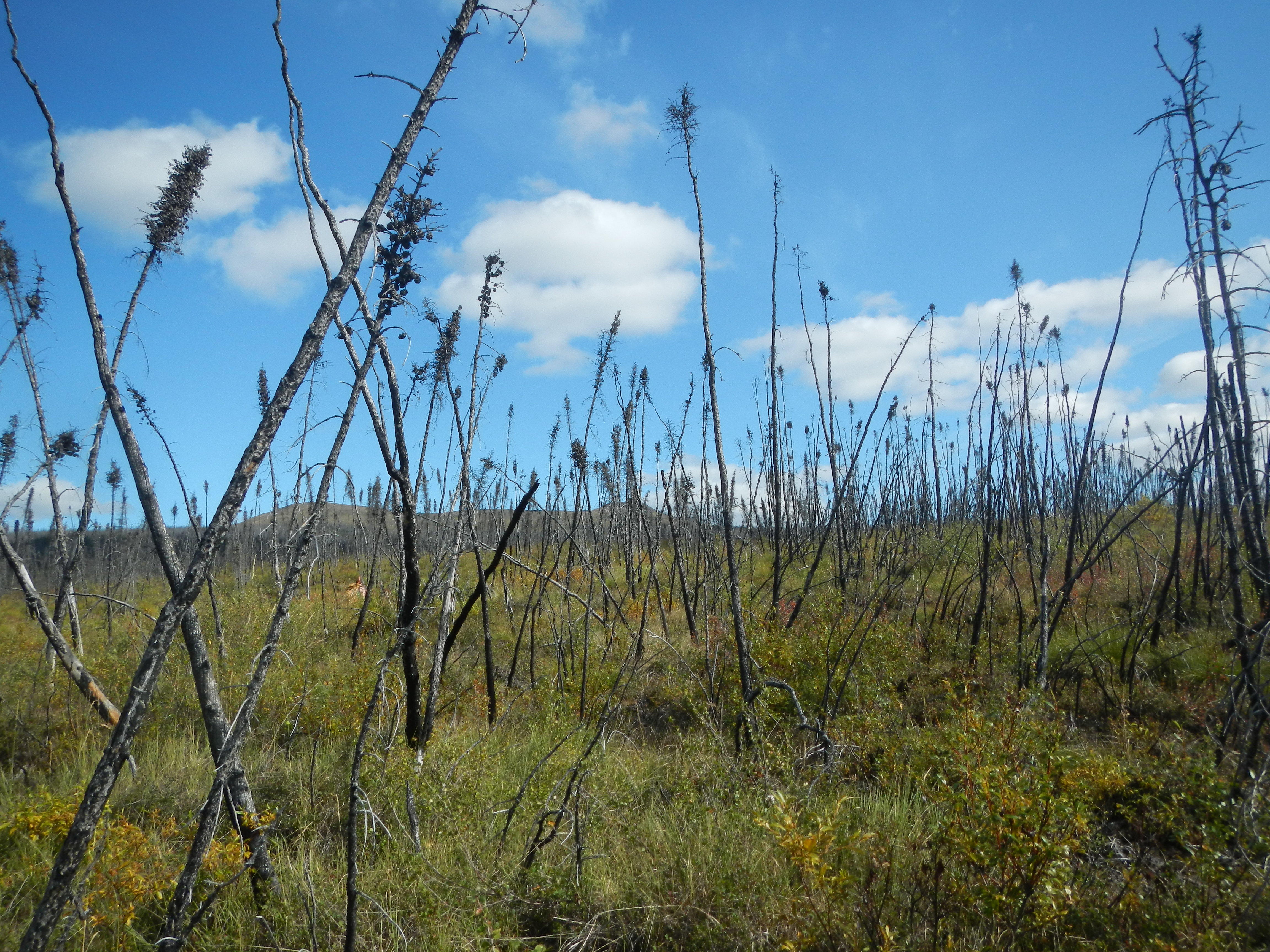
Lead
Michelle Mack (NAU)
Co-Lead
Scott Goetz
Keywords
Legacy carbon, climate change, fire, soil organic layer, carbon cycle, permafrost
Climate warming is resulting in increased fire frequency, extent and severity at northern latitudes. A significant amount of organic carbon in Arctic and boreal regions is stored in the soil organic layer, and thus carbon released from wildfires as a result of soil organic layer combustion is an important component of the Arctic-boreal ecosystem carbon balance. Of particular importance is “legacy carbon” – soil organic layer carbon pools that have survived previous fires. Combustion of this legacy carbon has the potential to cause a dramatic shift in Arctic-boreal carbon cycling – from a net sink, to a net source. We are identifying ecosystem, landscape and regional factors that control legacy carbon consumption. This will allow us to assess the effect loss of legacy carbon has on permafrost, soil drainage, carbon cycling, and post fire vegetation recovery.
For more information on this project, see Dr. Mack’s website.
